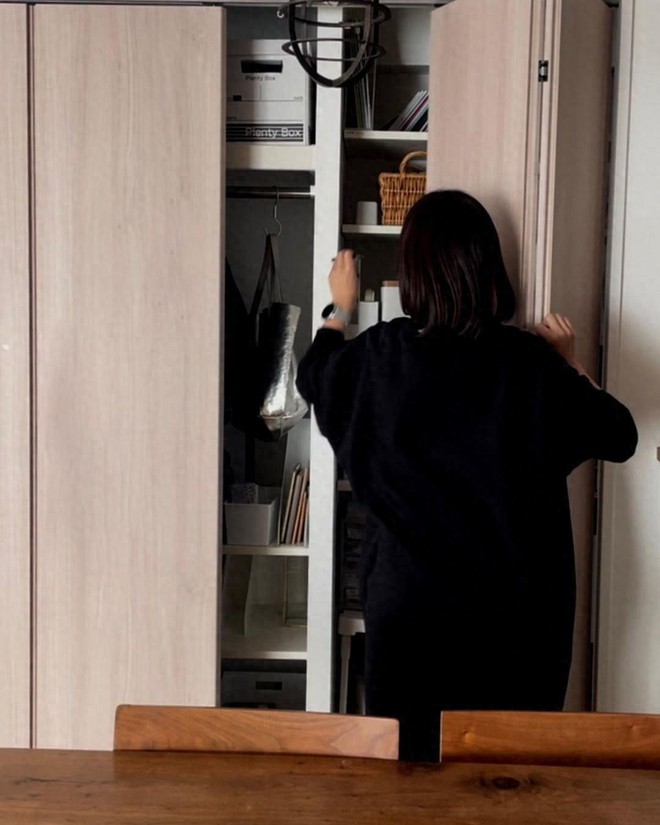Maachi, the Japanese homemaker I’m introducing today, is quite adept at tidying up indoor spaces.
As a homemaker, Maachi barely has any free time to clean the house while her children are young. She can only do household chores during unpredictable pockets of time, so she’s often too tired to bother.
But the wonderful thing is that no matter how messy the space, Maachi can quickly tidy up within 10 minutes, making storage very efficient.


1. Cut down on items promptly and reduce their quantity
The more items you store at home, the more effort it takes to maintain them, and you’ll also have to sort through things you haven’t used in a long time. Moreover, space costs tens of thousands per square meter, so it shouldn’t be filled with unused items. Regularly dividing and separating things will not only reduce storage needs but also create more space.
It’s better to embrace minimalism from the start than to accumulate things and then try to declutter later. Let go of the hoarding habit and keep a moderate amount of possessions.

2. Establish a storage logic
Maachi believes that storage follows a pyramidal structure: sorting → storing → organizing.
And tidying up is completely separate from storing. Some people think that tidying while storing prolongs the chore, increases psychological pressure, and makes people more prone to laziness.
Step 1: Sort and organize
Before starting to organize, the basic logic is to first sort and arrange items. Maachi mentions that the most important sorting principle is: “Keep what you have and discard what you don’t need.”
The purpose of returning to organization is to continue making choices.
Divide items into those to be discarded and those to be kept. Don’t indefinitely repress your true feelings out of pity. Pay attention to your genuine emotions. Imagine, is this an outfit you want to wear or tableware you want to use? If the answer is positive, keep it.
Step 2: Store
This step is not so much about the act of storing but more about deciding where to store things. Determine the location of objects so they can be found immediately the next time they’re needed, making them more accessible.

Step 3: Organize
Organizing here means returning items to their original positions. The reason your home looks messy is that things are often placed on coffee tables and chairs.
Storage becomes easier when every item has its designated spot. Maachi believes it’s fine if the house is a little messy, as long as you put things back in their places for 10 minutes before going to bed, you can restore the space to a clean state.
3. Create memorable storage spots
Many people are lazy and think about “picking up later” or “cleaning up later.” If the storage movement isn’t done well, it will be troublesome to leave things lying around, so it’s better to make it easier.
Maachi advises that when deciding on storage locations, remember to consider where the item will be used.
For example, the space for handbags and keys is arranged near the door, and Maachi also keeps her socks and gloves by the entrance. These accessories are only used when going out, so there’s no need to go back to the room to retrieve them, saving effort.

When you come home, you usually unconsciously put things on the nearest surface. Let’s see how Maachi really arranges the storage movement.
As soon as Maachi gets home, she puts her keys, umbrella, and gloves in the cabinet by the door.

For coats, a clothes rack is placed by the window for easy storage.

If you want to finish storing things in 10 minutes like Maachi, the simplest way is to separate, store, and locate storage spots. Just master these three tips, and you’ll have a neat home without too much effort. Give it a try.































